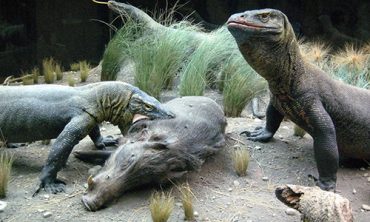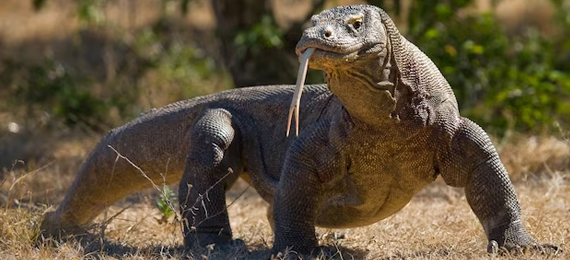
Table of Contents
What family does the Komodo belong to?
- A. Varanidae
- B. Herpestidae
- C. Lepidosauria
- D. Rhynchocephalia
External Features of Komodo Dragon
Internal Features of Komodo Dragon
Do Komodo dragons eat a Human?
What is a Komodo Dragon?
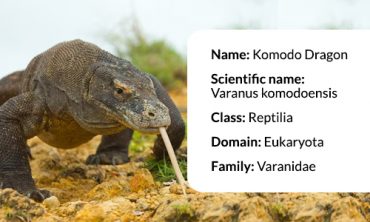
Komodo dragons aka monitor lizards are larger and heavier versions of lizards characterized by their long tails, acrobatic necks, and strong limbs. This gigantic species has evolved over millions of years. This animal has a flat body, round snout, and muscular tail. The Komodo dragon belongs to the lizard family, Varanidae. They can sense the blood smell from far away and crawl up to 20 km/h. Komodos are one of the most dangerous animals in the world.
-
Are Komodo dragons venomous?
Komodo dragons are venomous! Their bite is one of their most interesting features.
Here’s a bit more detail:
Venomous Bite: While the venom itself isn’t strong enough to instantly kill large prey, it packs a double punch:
Anticoagulants: These prevent blood clotting, leading to massive blood loss in the bitten animal.
Paralytic toxin: This weakens the prey, making it easier for the Komodo dragon to track and eventually consume it.
-
Where Do Komodo Dragons Live?
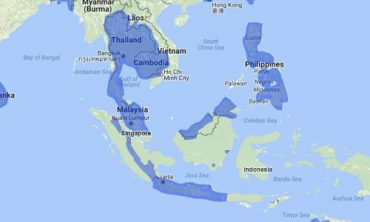
Komodo dragons bear the name of the place they inhabit – Komodo Island. They can be found in Indonesia’s Lesser Sunda Island, Rintja, Padar, Flores, and Gili Montang. It acts as an apex predator in its surroundings. An adult Komodo Dragon can grow up to 10 feet long and weigh around 70 to 150 kg.
-
External Features of Komodo Dragon
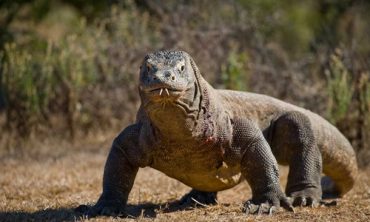
Size
The Komodo dragon is the largest extant in the lizard family. Commonly, they weigh up to 366 pounds (166 kg), however, the largest Komodo weighed up to 366 pounds with a length of 10.3 feet. The male dragons are heavier and stronger than the females.
Skin and Scales
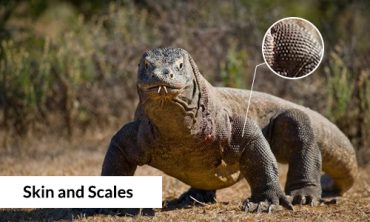
Komodo’s skin has armored scales. Each scale contains bony structures called an osteoderm, which is covered in keratin. The mosaic-like pattern on the skin is unique and differentiable. Their skin complexion helps them camouflage with their natural habitat. Similar to their intricate skin patterns, they have two eyes with different eyelids.
Tail
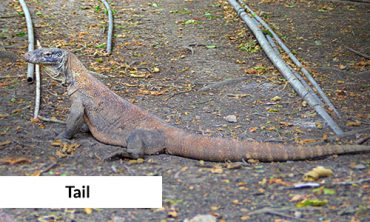
Komodo tails grow longer than their body. As the body grows, the tail also grows equal to the body’s length. The tail appears round and thick and is stored with fat and strong muscles, which help them balance when they run or swim.
Limbs
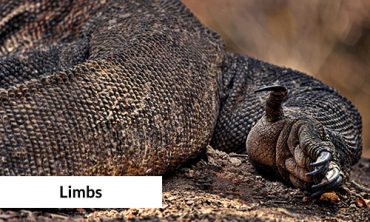
With its powerful limbs, it could dig up a hole measuring 1 to 3 meters. It features four legs with five fingers and sharp twisted nails.
-
How Fast Is a Komodo Dragon?
Despite their bulky appearance, Komodo Dragons can be surprisingly fast in short bursts! They’ve been recorded reaching speeds of up to 20 kilometers per hour (13 miles per hour). That’s faster than the average human can run! However, Komodo Dragons are ambush predators. They typically rely on stealth and patience to wait for prey to come close enough to attack. Their bursts of speed are then used to chase down and overpower their prey
-
Internal Features of Komodo Dragon
Serrated Teeth
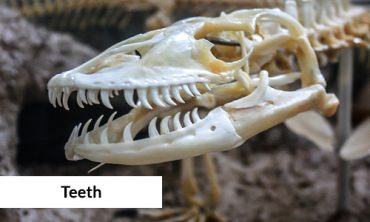
The Komodo dragon features 60 razor-like teeth, which are used to attack the prey. Unlike other animals, it can regrow lost or damaged teeth. They can replace their teeth at least 4 to 5 times in their lifetime. Recent research reveals adult Komodo teeth are remarkably similar to those of theropod dinosaurs, with strongly recurved teeth with serrated cutting edges strengthened by dentine cores.
Expandable Stomach
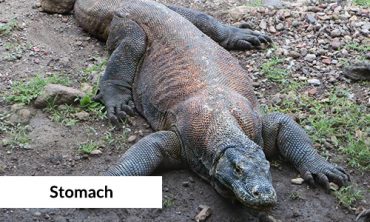
The lizard’s stomach is stretchable, and it can wolf down food equal to 80% of its body weight in a single meal. When it finds food or rotting flesh, the whole lot shares it. The largest member of their group consumes first, followed by the females and others. Komodo Dragons can empty their stomachs in order to escape from a threat.
Super Sense of Smell
Using their super sense of smell, a Komodo can locate its prey or body. They taste the airborne molecules with the forked tongue and reach the roof of the mouth, Jacobson’s organs. Then identify the exact location based on the molecules present on the tip of the tongue.
Blood-Tinged Saliva
Komodo dragons secrete saliva when they are looking for food. The saliva is so toxic that it contains nearly 50 different bacteria. It gushes its saliva through its teeth to kill the prey. If the dragon is not strong enough to compete with the opponent, they use their saliva as their instant weapon.
-
Do Komodo dragons eat a Human?
Komodo dragons are carnivores, they can feed on anything including humans. Mostly, they dig out the decayed meat to eat. In some instances, they even bite humans.
Komodos inhabit the volcanic areas in Indonesia. As per the estimation, only 1,400 adult dragons and 2,000 juveniles survive in the world.
